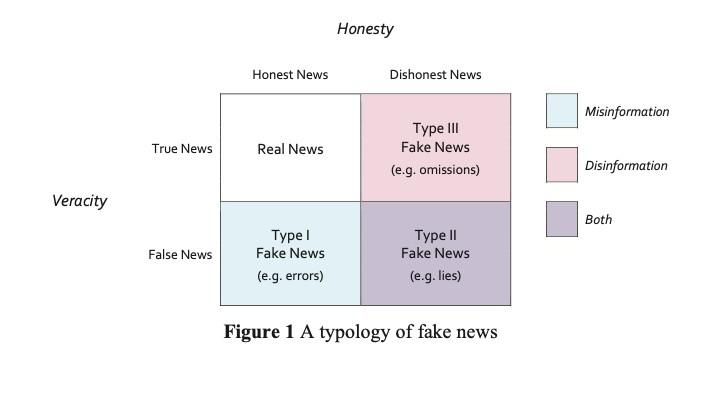How Does Disinformation "Speak" To Us?!

In today's information landscape, the widespread dissemination of fake news and misleading information presents significant challenges to individuals, nations, and the integrity of fact-based discourse. Both domestically and internationally, authoritarian regimes and their affiliates actively employ information manipulation to undermine democratic processes, sow discord, and destabilize target societies from within. Through the strategic spread of disinformation, information suppression, and propaganda, they successfully manipulate public opinion, distort political debates, and erode trust in institutions.
To counter this pervasive issue, various methods can be employed, including fact-checking, strengthening trustworthy and responsible media, researching harmful information practices to inform appropriate responses, tightening legislative regulations, limiting sources of disinformation, applying diplomatic measures, and etc. However, ideally, the identification and neutralization of manipulative information should primarily occur at the individual level. This means it's crucial for the majority of society to possess the education and skills necessary to navigate the complexities of propaganda. Naturally, achieving this is a long-term, complex, and sometimes seemingly insurmountable task. Nevertheless, efforts in this direction remain vital. Many researchers are contributing to this goal by identifying the linguistic characteristics of misleading information and developing practical tools to help individuals correctly process information.
To understand the linguistic features of misleading information, we must first define what kind of information qualifies as such. It consists of several key components: misinformation, disinformation, propaganda, and information suppression. Misinformation refers to factually false claims spread without intent to deceive, often due to error or misunderstanding. As for disinformation, while definitions can vary, the term generally refers to the deliberate dissemination of false or misleading information. Propaganda is defined as the intentional spread of false or misleading information serving a political or ideological agenda. To deceive audiences, actors may also engage in information suppression, which involves hindering the distribution of certain narratives or facts to prevent them from gaining attention. In addition to these, misleading information also includes "clickbait", which uses sensational headlines to attract attention, often for monetization or to increase website traffic. Furthermore, satire can sometimes be misleading as well, though its goal is typically entertainment or the humorous delivery of critical viewpoints, not deception.
To better distinguish between reliable and misleading information, Grant and Woodfield (2023) propose the following classification: type I fake news refers to unintentionally false information. In these cases, distributors believe the content to be true, but it is factually incorrect. Thus, Type I qualifies as misinformation but not disinformation. Type II fake news refers to deliberately false information, where distributors intentionally share content, they believe to be false. Therefore, Type II qualifies as both misinformation and disinformation. Type III fake news refers to content that is factually accurate but still aims to mislead. This can occur, for example, by omitting important details or presenting information selectively. Hence, Type III qualifies as disinformation but not misinformation.

Source: The Language of Fake News. p. 13
This classification highlights that even factually accurate information, when presented without proper context or within a distorted one, can mislead the public. Therefore, discerning malicious intent in such instances becomes most challenging.
Linguistic Characteristics of Misleading Information
Analysis of academic research reveals that the linguistic features of misleading information are primarily found in the following textual components: text length and paragraph structure, headline characteristics, lexical and semantic patterns, and grammatical and syntactic markers. It is also important to acknowledge that misleading information may exhibit different characteristics across various languages. In this regard, English is the most extensively studied language. However, it is still possible to identify common characteristics of misleading news that may transcend linguistic boundaries.
Compared to legitimate news, misleading news texts are generally shorter and contain fewer words. For instance, Asubario and Rubin’s (2018) research demonstrates that trustworthy journalistic pieces are, on average, 481 words longer than those containing misleading information. Additionally, reliable texts tend to have more paragraphs. A similar structural simplicity in misleading news is also observable through general analysis: such texts are less complex, shorter, and employ more direct sentences. By reducing the overall volume of content, creators of misleading news minimize the effort associated with lengthy, detailed analysis. Simultaneously, such content is easy to understand and share, which facilitates its viral spread. Therefore, a highly simplified news structure, particularly an emphasis on sensational elements, can be a significant indicator of potentially misleading information.
Another crucial indicator lies in the headlines of misleading news, which are specifically designed to manipulate readers. Studies show that these headlines often contain more words than trustworthy news headlines and tend to use more punctuation marks, such as question marks and exclamation points, to attract attention. These features are not random stylistic choices; they are directly related to the goal of creating "appealing" and "eye-catching" content. The disproportionate emphasis on the headline suggests that creators of false information understand that many users only read headlines, and these must be persuasive enough to overcome initial skepticism. This linguistic "noise" represents an emotional manipulation designed to immediately grab attention without engaging critical thinking. Therefore, it is important to be aware of the key features of such headlines and apply this knowledge in real-world information consumption.
When discussing the characteristics of misleading information, researchers place particular emphasis on its emotional language. In most cases, false news is crafted with the intention of evoking strong emotions in the audience, such as fear, doubt, or confusion. It is typically characterized by a high concentration of general but highly emotional words, especially in headlines. Furthermore, misleading news is more likely to disseminate negative emotions, such as anger and disgust. This finding is also supported by traditional disinformation studies, where disseminators often seek out enemies or "scapegoats" against whom the majority of society should rally. These "scapegoats" are typically various types of minorities, who are presented as the root cause of a country's problems and threats to "national identity."
The constant presence of emotional language, particularly negative emotions, in misleading information is not merely a byproduct of falsehoods but also a deliberate and effective tool for enhancing its shareability and virality. This is confirmed by the research of Zhou, Li, and Lu (2021), which found a positive and significant correlation between negative emotions and the spread of disinformation. Furthermore, according to this study, misleading information is characterized by the use of ambiguous or uncertain words (e.g., lack of specificity, vague terms). This ambiguity, in turn, makes it difficult for people to accurately assess the information, often leading them to share it and thereby further contributing to its viral spread. Another indicator of misleading information may be the excessive use of persuasive language and the citation of individuals with specific status to convince the audience. This includes the frequent referencing of questionable or even fabricated "professors," "experts," or "doctors" by creators of false information to enhance perceived credibility.
An essential characteristic of misleading information is the blatant violation of journalistic norms, which includes the use of jargon, offensive language, an informal tone, exaggeration, and hate speech. The use of informality and subjectivity by disinformation disseminators serves several strategic purposes. This style helps bypass the "dryness" of factual information, making the content appear closer and more "authentic," thus directly connecting with the worldview of the target audience. Simultaneously, this direct information fosters a sense of tribal affiliation and attempts to rally the audience against imaginary enemies. All of the above-mentioned characteristics of disinformation, which aim more to stir emotions than to distribute verified facts, naturally lead to misleading news lacking verifiable sources and credible endorsements from recognized organizations. The scarcity of these elements in false information results from its misleading nature, as there are no real facts or people to be cited. Without the mention of specific individuals, organizations, or places, it becomes impossible for readers or fact-checkers to verify the news, making its content more resistant to traditional fact-checking methods. This can be considered as a passive form of lying, which relies not on outright falsehoods but on the absence of verifiable information.
Another important finding from the studies exploring characteristics of misleading information is the increased use of third-person pronouns (e.g., "he," “she”, "they") and, conversely, a reduced use of self-referencing. This pattern of pronoun usage serves as a mechanism for evading responsibility and significantly complicates the identification of the origin of facts or opinions presented in the journalistic product. This makes it harder for readers or fact-checkers to trace the source, as it remains vague and unidentifiable.
The primary goal of misleading information is to manipulate human emotions. Consequently, such news frequently incorporates so-called moral dilemmas, such as care/harm, truth/lie, loyalty/betrayal, purity/degradation, etc. In contrast, such moral foundations are rarely used in trustworthy sources, as it is more focused on facts. The use of moral dilemmas is especially noticeable in propaganda pieces that aim to manipulate emotions. This strategy goes beyond simple emotional manipulation by leveraging deeply rooted human values or beliefs, intending to elicit a stronger resonance with the recipient. This makes the content feel intuitively "right" or important, even if its factual basis is weak or nonexistent. Therefore, it represents a sophisticated and persuasive strategy that bypasses purely rational reasoning by directly influencing moral intuitions. This approach also makes misleading information more resistant to denial, as it aligns with people's moral identities and worldviews, and often becomes nearly impossible to counteract with facts.
***
Misleading information represents one of the most pressing challenges of the modern era, significantly impacting individuals and the democratic development of countries. A key aspect in combating this phenomenon lies in recognizing its linguistic characteristics. As various research analyses demonstrate, misleading information is characterized by a combination of textual and stylistic traits: it typically comprises short texts, emotionally charged and sensationalist headlines, strong negative vocabulary, unclear sources, and a distanced authorial tone. Furthermore, it often violates journalistic ethics, employs persuasive but unethical rhetoric, and leverages moral dilemmas, allowing falsehoods to firmly embed themselves in the public consciousness. It is noteworthy that news created with such linguistic structures is primarily intended to manipulate public emotions, intensifying feelings of fear, anger, and uncertainty. Unsurprisingly, such approaches are overtly evident in Russian propaganda, which poses a significant challenge to the contemporary democratic world. Attempts to manipulate society using fear, disgust, or ambiguity can also be observed in the language of Georgia’s ruling party and its affiliated media channels. Examples include terms like "global war party," "deep state," "foreign agent networks," "Western organizations' battle against Georgia’s sovereignty", etc.
It is crucial to emphasize that the language of misleading information is not merely a random combination of words; it is a result of systematic strategies designed to bypass critical thinking, amplify emotional influence, and increase the effectiveness of informational manipulation. Therefore, it is imperative for citizens to pay close attention to how they receive and process information, rather than judging solely by sensational headlines or falsely pathetic texts. This vigilance is essential to avoid becoming victims of such manipulation, or unwitting spreaders of it.
For the complete document, including relevant sources, links, and explanations, please see the attached file.

